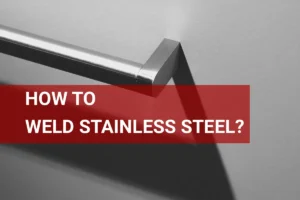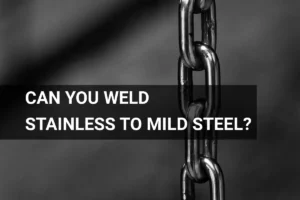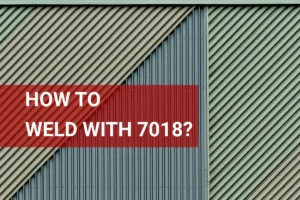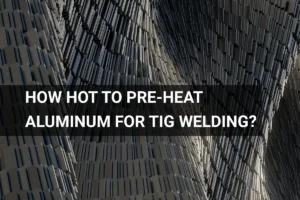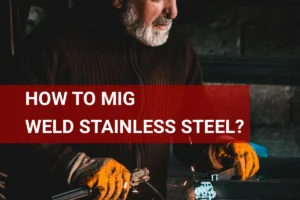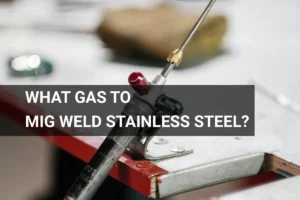Can You Arc Weld Stainless Steel? Discover Techniques, Tools, and Tips
Published on: May 24, 2025 | Last modified: March 4, 2025
By: Mark Carter
So, can you arc weld stainless steel? It’s crucial to know since stainless steel has unique properties that affect the welding process. In my experience, if you don’t follow the right steps, you might end up with weak joints or even damages. Knowing what you’re doing is key!In this guide, we’ll explore the question of can you arc weld stainless steel, look at different welding types, list the necessary items, outline steps for the process, go over safety tips, discuss factors affecting the quality, examine unique challenges, and highlight aftercare tips. We’ll also cover the top benefits, common applications, and other stainless steel welding options. You’ll learn how to arc weld stainless steel like a pro!
Contents
- Can You Arc Weld Stainless Steel?
- What is Arc Welding?
- Types Of Arc Welders
- Things You’ll Need
- Safety Tips
- Steps for Arc Welding Stainless Steel
- Types Of Arc Welding for Stainless Steel
- Factors Affecting Arc Welding Of Stainless Steel
- Unique Issues for Arc Welders
- Common Challenges When Arc Welding Stainless Steel
- Aftercare, Inspection, and Advanced Tips for Arc Welding Stainless Steel
- Top Benefits Of Arc Welding Stainless Steel
- Applications Of Arc Welding Stainless Steel
- Other Options for Welding Stainless Steel
- Frequently Asked Questions (FAQs)
- Conclusion
- References
Can You Arc Weld Stainless Steel?
Yes, you can arc weld stainless steel. It’s a bit tricky due to the metal’s heat sensitivity, but using the right welding rod, like 308L, helps. Make sure to maintain the ideal temperature around 1,600°F (870°C) for the best results.
What is Arc Welding?
An arc welder uses electric arcs to melt and join metals. This technique generates intense heat, often reaching around 3,600°C (6,500°F). The process relies on an electrode that creates an electrical arc when it contacts the workpieces. In 2022, over 74% of welders in the U.
S. preferred arc welding for its efficiency and versatility.
Now, can you arc weld stainless steel? I’ve had my share of experiences with this. Last summer, I tackled a project that required welding different stainless steel pieces, which presented some challenges.
I often used arc welding for various materials during my weekend projects. Arc welding stainless steel has its quirks, like selecting the right amperage and maintaining the correct distance. I’ve discovered some techniques for welding stainless steel with an arc welder, especially for thin sheets. It’s all about having the right settings!
Types Of Arc Welders
Stick Welders
Stick welders use a consumable electrode to create an electric arc. You can weld stainless steel with a stick welder. Set your welder to the right amperage, usually between 70-150 A, depending on thickness, and use suitable electrodes like E308.
MIG Welders
MIG welders use a continuous wire feed to join metals. You can also weld stainless steel with a MIG welder. Use a shielding gas like Argon or a mix of Argon and CO2, and adjust your wire speed based on material thickness, typically between 10-15 inches per minute.
TIG Welders
TIG welders create an arc using a non-consumable tungsten electrode. Welding stainless steel with a TIG welder is effective. Set your welder to DCEN (Direct Current Electrode Negative) and use filler rods like ER308 while ensuring smooth gas coverage to avoid oxidation. It’s important to consider safety during the welding process even though TIG welding itself is relatively less hazardous; it’s essential to understand how dangerous is welding to take appropriate precautions.
Multi-process Welders
Multi-process welders can perform different welding types. You can weld stainless steel using these units, as they offer various settings. Select the right process—MIG or TIG—adjust voltage for thickness, and choose an appropriate filler to match your stainless steel type. Understanding how to prevent inhaling welding fumes is also crucial to ensure safety during the welding process.
Submerged Arc Welders
These welders use an arc beneath a layer of granular flux. Submerged arc welders can weld stainless steel. To achieve the best results, you should consider various factors when selecting your welding technique based on the materials being used. Proper knowledge of welding by metals can help you ensure you use the correct flux and adjust your feed rate to maintain a steady arc for deep penetration, ideal for thicker sections.
Accurate control of the welding parameters is crucial to minimize defects, particularly to avoid causes of weld spatter that can affect the quality of the weld.
We’ve wrapped up the different types of arc welders here. Next up, we’ll look at the necessary supplies.

Things You’ll Need
What do you need to arc weld stainless steel?
- Arc Welder: You’ll need a quality arc welder, like the Lincoln Electric AC/DC 225/125. This unit delivers up to 225 amps, making it ideal for welding stainless steel with thicknesses from 1/8 in (3.2 Mm) to 1/2 in (12.7 Mm).
- Electrodes: Use 308L stainless steel electrodes, such as E308L-16. These electrodes are specifically designed for welding stainless steel and offer better corrosion resistance.
- Ground Clamp: A secure ground clamp, like Miller’s Heavy-Duty Ground Clamp, ensures a reliable electrical connection. A poor ground can lead to weak welds.
- Welding Rod Holder: A sturdy rod holder, such as Tweco’s Fusion 200, is crucial for stability and ease while welding.
We have now covered essential items you’ll need. Next, we will examine important safety precautions to keep in mind.
Safety Tips
Let’s review essential precautions for arc welding stainless steel.
- Protective Gear: Always wear safety glasses, gloves, and a welding helmet. For example, choose a Miller welding helmet for better protection; it minimizes injuries from sparks and UV radiation.
- Ventilation: Ensure good airflow in the workspace. Use a powered industrial fan to reduce harmful gas concentrations while you work.
- Fire Safety: Keep Class ABC fire extinguishers nearby. Fires can ignite easily from sparks, so having a way to stop them is critical for safety.
- Workpiece Stability: Secure your stainless steel workpiece properly to prevent accidents caused by unexpected movement while welding.
Ignoring safety precautions can lead to serious injuries; they matter!You should now have a good understanding of safety precautions, best practices, and hazards. In the next part, we’ll discuss the steps for arc welding stainless steel.
Steps for Arc Welding Stainless Steel
Here are the steps for effectively welding stainless steel with an arc welder.
Choose Your Electrodes Wisely
Select the right electrode type based on your stainless steel grade. For example, E308L is common for welding 304 stainless steel. An electrode diameter of 1/8 inch (3.2 Mm) typically works well for most projects. For thin sections, consider a smaller diameter, around 5/64 inch (2 Mm). The right electrode affects weld quality and process ease. Practice runs are recommended to find the best combination for your specific job. If a mistake is made and a joint needs correction, learning how to remove welds properly becomes essential.
Set Your Welding Parameters
Adjust your arc welder’s settings. Generally, aim for an amperage between 90-125 amps, depending on material thickness. Thicker materials require higher settings, while thinner sections need less power. Also, adjust your travel speed for optimal bead size and penetration.
Keep notes on your settings for future jobs. Having these details handy is useful, especially when you find an ideal setup.
Prepare the Joint Surface
Ensure the surfaces you’re welding are clean and free from contaminants. Use a non-residue cleaner to degrease for optimal results. Cleaning stainless steel removes oils or rust, preventing weak points in your weld. A clean surface greatly enhances adhesion and penetration quality.
Also, align your pieces properly before starting. A loose joint can cause undercutting, a mistake often made by beginners!
Control Your Arc Length
A proper arc length ensures consistent heat throughout the weld. For most stainless steel jobs, aim for an arc length of about 1/16 inch (1.6 Mm). A long arc can lead to uneven welding and excessive spatter, while a short arc can cause burn-through, especially on thinner gauges.
Positioning your electrode correctly is vital. Focus on controlling the arc, and your technique will improve over time. Remember, practice makes perfect—don’t rush it!
Finishing Techniques
After welding, clean the weld bead to remove slag and excess material. Wire brushing or grinding ensures a clean finish. Check for defects or inconsistencies in your bead, as smooth finishing affects both aesthetics and the structural integrity of your weld.
It may be tempting to skip this step, but don’t! Investing extra time here pays off in durability and appearance. Plus, your work will look professional!
We have now covered the steps for arc welding stainless steel. Next, we will examine the various types of arc welding.
Types Of Arc Welding for Stainless Steel
Let’s explore the different types of arc welding: GTAW, GMAW, SMAW, FCAW, and SAW.
Gas Tungsten Arc Welding (GTAW)
GTAW, or TIG welding, uses a non-consumable tungsten electrode and requires shielding gas, usually argon. It’s ideal for thin materials, producing high-quality welds at 60-80 amps for stainless steel. Can you arc weld stainless steel? Absolutely!
Gas Metal Arc Welding (GMAW)
GMAW, or MIG welding, uses a continuous wire feed as the electrode. You can efficiently weld stainless steel this way, with a welding current typically ranging from 20 to 300 amps, suitable for various thicknesses.
Shielded Metal Arc Welding (SMAW)
SMAW, or stick welding, uses a consumable electrode coated in flux. It’s robust and versatile, performing well in windy conditions. It’s handy for welding thicker stainless steel, typically operating around 70-200 amps.
Flux-cored Arc Welding (FCAW)
FCAW is similar to GMAW but uses a tubular wire filled with flux. It’s great for outdoor work due to its self-shielding capability. Though not the first choice for stainless, it’s used for thicker steel at around 200 amps.
Submerged Arc Welding (SAW)
SAW is a high-productivity method where the arc is submerged under a blanket of granular flux. It’s perfect for joining thick stainless steel plates, typically operating at 300-600 amps, resulting in strong, clean welds.
Factors Affecting Arc Welding Of Stainless Steel
What factors determine successful arc welding of stainless steel?
Welding Technique
Using the right technique is crucial. For example, an E308L electrode works best with 308 stainless steel, providing good fusion and minimizing contamination.
Material Thickness
Thickness significantly affects the weld. For metal thicker than 5 mm (0.2 In), you’ll need higher amperage settings for proper penetration.
Joint Design
Choose a V-groove joint for thicker plates. Proper design simplifies the welding process, ensuring even heat distribution and a stronger bond.
Base Metal Preparation
Clean surfaces are essential. Remove rust, oil, and contaminants; a clean surface enhances the arc and reduces weld defects.
Heat Input
Managing heat input is vital. Excess heat can warp stainless steel, while insufficient heat may cause improper fusion. Aim for a heat input of about 1.8 kJ/cm (45 Kj/in).
Unique Issues for Arc Welders
Here are some specific issues you might face with an arc welder.
Cracking in Weld Joints
Cracking can occur at the weld joint due to rapid cooling. Check for stress with a visual inspection and listen for sounds. To fix it, preheat the joint to 200°F (93°C) and rerun the weld at a slower speed. Selecting the appropriate welding rod is essential for achieving strong and stable welds and you can explore what welding rod to use to improve your results.
Pitting and Corrosion
Check the area for pitting, which arises from contaminants. It appears as tiny holes in the weld. Clean the area, use a stronger filler metal, and increase the heat input to correct it.
Warping Of Materials
Arc welding can create heat distortions, causing materials to warp. Look for bent or misaligned parts. You may need to back-step your welds for cooling control or use clamps to hold the parts while welding.
Color Changes on Surface
An arc welder can cause surface color changes due to oxidation. Inspect for discoloration after welding. Protect your work area with shielding gas, and clean the surface afterward to maintain a shiny finish.
Common Challenges When Arc Welding Stainless Steel
Arc welding stainless steel can come with its share of hiccups. Here are some challenges you might face and how to tackle them effectively.
Burnthrough Risk
Burnthrough happens due to excessive heat concentration, especially on thin materials. To prevent this, control your travel speed and maintain a proper arc length—ideally around 1/16 inch (1.6 mm). Keep that torch moving smoothly and steadily to spread the heat evenly!
Heat Affected Zone (HAZ) Issues
Stainless steel is sensitive to temperature. An overly large HAZ can lead to softened areas that are prone to corrosion. Aim for a smaller HAZ by using faster travel speeds and appropriate amperage settings to keep heat in check.
Weld Bead Appearance
Sometimes your weld might look rough or uneven. This can arise from improper technique or settings. To enhance bead appearance, adjust your arc length, maintain a steady hand, and consider using a filler material that matches your base metal composition closely.
| Issue | Impact | Solution |
|---|---|---|
| Burnthrough | Weak joints in thin sections | Control travel speed, maintain arc length |
| HAZ Size | Increased corrosion risk | Use faster travel speeds, adjust amperage |
| Bead Appearance | Poor aesthetics, potential weak spots | Adjust technique, match filler material |
Being aware of these challenges can lead to better outcomes. Adapt your technique as you go, and keep practicing—welding stainless steel can be tricky, but with time you’ll get the hang of it!
Aftercare, Inspection, and Advanced Tips for Arc Welding Stainless Steel
Here are crucial aftercare, inspection, and expert tips specific to your arc welding experience with stainless steel.
Aftercare Tips
After welding stainless steel, clean the weld area immediately with a stainless steel wire brush. This removes contamination that can promote rust. For optimal results, use a solution like phosphoric acid to passivate (Neutralize) the weld surface; limit your mixtures to a 1:1 ratio of water to acid.
Inspection
Inspect weld depth and bead width, aiming for 2.5mm (0.1 In) to 3mm (0.12 In). Tools like ultrasonic thickness gauges, such as Sonatest, help achieve accurate measurements. I use a caliper for quick depth checks to ensure a solid metal bond.
Expert Tips
If this isn’t your first rodeo, focus on tighter arc control, maintaining a distance of 3-5mm (0.12-0.2 In). Adjust the amperage to 10-30% higher to compensate for heat loss in thicker materials. Reinforce heat with proper preheating techniques using an oven set at 100°C (212°F) for heavy sections.
Top Benefits Of Arc Welding Stainless Steel
The main advantage of arc welding stainless steel is versatility. I often use it for various projects, from automotive repairs to artistic sculptures.
This method creates strong joints that resist corrosion, making it ideal for outdoor and marine applications. You’ll enjoy faster welding speeds, reduced post-weld cleanup, and the ability to work with different thicknesses, from 0.8 mm (0.031 In) to 12 mm (0.472 In) or more!
Applications Of Arc Welding Stainless Steel
I’ve used arc welding for various tasks, with many applications, such as:
- Food Processing Equipment: Arc welding joins stainless steel parts in equipment. It’s popular for its corrosion resistance and compliance with health standards.
- Aerospace Components: High-strength welds on aircraft parts enhance safety and efficiency. This application requires precision, making arc welding highly preferred.
- Marine Industry Structures: Ships and offshore platforms use arc welding. It’s essential for withstanding harsh environments and ensuring long-lasting durability.
- Architectural Features: Stainless steel handrails, frames, and facades often rely on arc welding for strength and aesthetic appeal. It’s favored for its clean finish and sturdy joints.

Other Options for Welding Stainless Steel
If you’re looking for alternatives, consider MIG welding and TIG welding as excellent choices. Products like the Lincoln Electric Easy MIG 140 and the Miller Diversion 180 are preferred for their ease of use and great results. Here’s a nugget of wisdom I’ve picked up along the way: use a shielding gas like argon or a mix to prevent oxidation when working with stainless steel.
Depending on your needs, stick welding (Like the Hobart Stickmate 160) can also work, especially for thicker materials. It’s crucial to set your amperage right to prevent burn-through and get a clean weld. These methods can often provide an easier, more versatile solution without compromising quality.
Frequently Asked Questions (FAQs)
Now let us look at some common questions I typically get asked about arc welding.
Can You Weld Stainless Steel With a Regular Arc Welder?
Yes, you can weld stainless steel with a regular arc welder. Using the right rods like E308 or E316 makes a big difference in quality. These rods contain nickel, which improves strength and corrosion resistance, especially with stainless steel grades. Mastering the intricacies of working with delicate metals can significantly enhance your welding projects, so knowing how to weld thin metal is essential.
What is the Best Arc Welding Rod for Stainless Steel?
The best arc welding rod for stainless steel is usually E308. This rod works for many austenitic stainless steels. It ensures good fusion and is suitable for root passes and multi-pass welds.
Which Weld is Best for Stainless Steel?
The TIG weld is typically considered the best for stainless steel. It offers exceptional control over heat and penetration. This process helps reduce distortion while maintaining high-quality welds.
Can You Arc Weld Galvanized Steel?
Yes, you can arc weld galvanized steel. However, it’s crucial to remove the zinc coating where you plan to weld. The fumes from the coating can be hazardous and may weaken the weld.
Can I Weld Stainless Steel With an Arc Welder?
Yes, you can weld stainless steel with an arc welder. Using the right technique and filler materials is key. For thicker pieces, you might need to go with a multi-pass welding approach to ensure strength.
How to Arc Weld Thin Steel?
To arc weld thin steel, use a lower amperage and faster travel speed. This prevents warping and burn-through. A 1.6 mm (1/16 in) electrode is a good choice for this type of welding.
Conclusion
I hope this gave you what you needed about welding. We covered what arc welding is, types of arc welders, necessary items, steps for welding stainless steel, safety tips, types specific to stainless steel, factors affecting welding, unique issues, and aftercare. We also looked at the benefits and applications of arc welding, along with other options available for welding stainless steel.
So, can you arc weld stainless steel? Yes, you can, and it’s a viable method. Just remember, you’ll need the right arc welder, welding rods like E308 or E316, proper settings, and safety precautions to ensure successful results.
For a deeper dive into the world of welding, including tips and resources, check out What is Welding.
References
- International Organization for Standardization. (2017). ISO 3834: Quality Requirements for Fusion Welding of Metallic Materials. Geneva, Switzerland: ISO.
Mark is a skilled welding engineer specializing in advanced metal joining technologies and process design. With a formal education in welding engineering and a background rooted in practical experience, Mark bridges the gap between theory and application. He is passionate about making technical concepts accessible, empowering welders to embrace innovation while mastering essential skills. Mark combines his scientific expertise with a commitment to supporting the welding community alongside his uncle, Joe.
Arc Welding, Filler Metal, MIG Welding, Safety Precautions, Safety Tips, Stainless Steel, Structural Integrity, Welding, Welding Rods, Welding Techniques, Welding Tools
